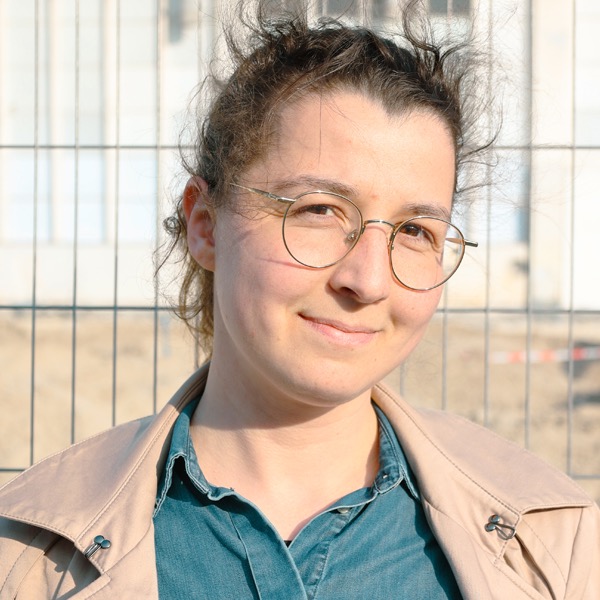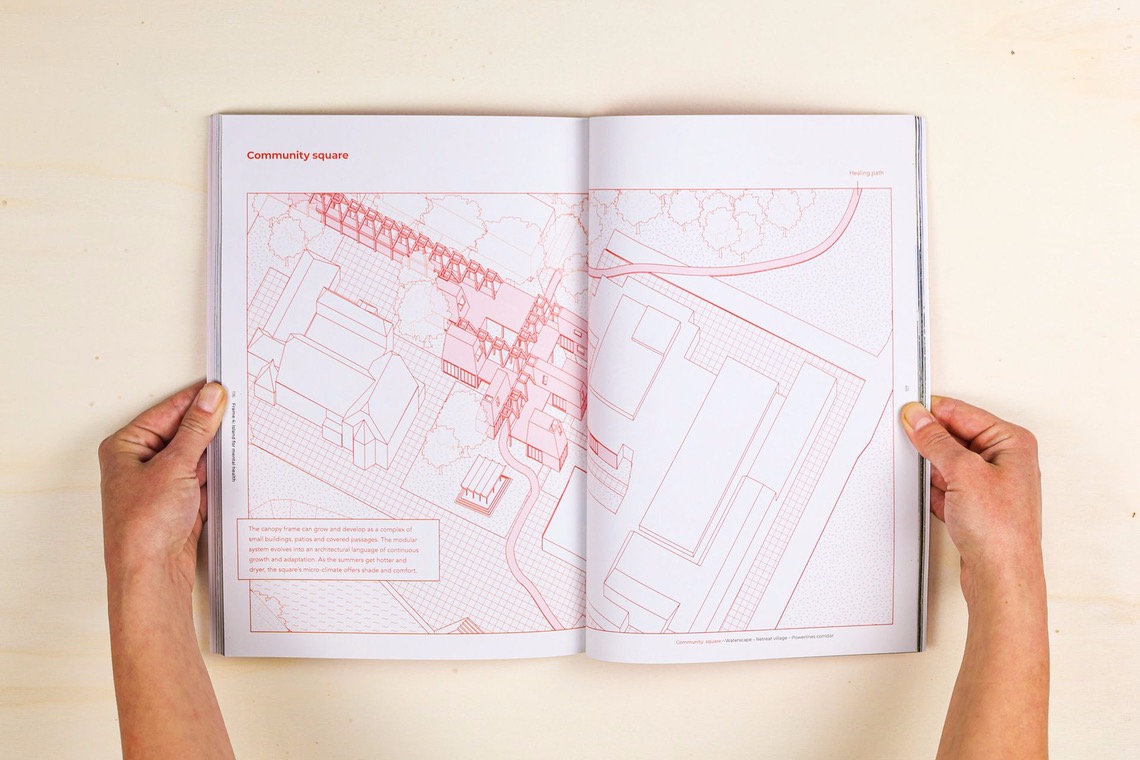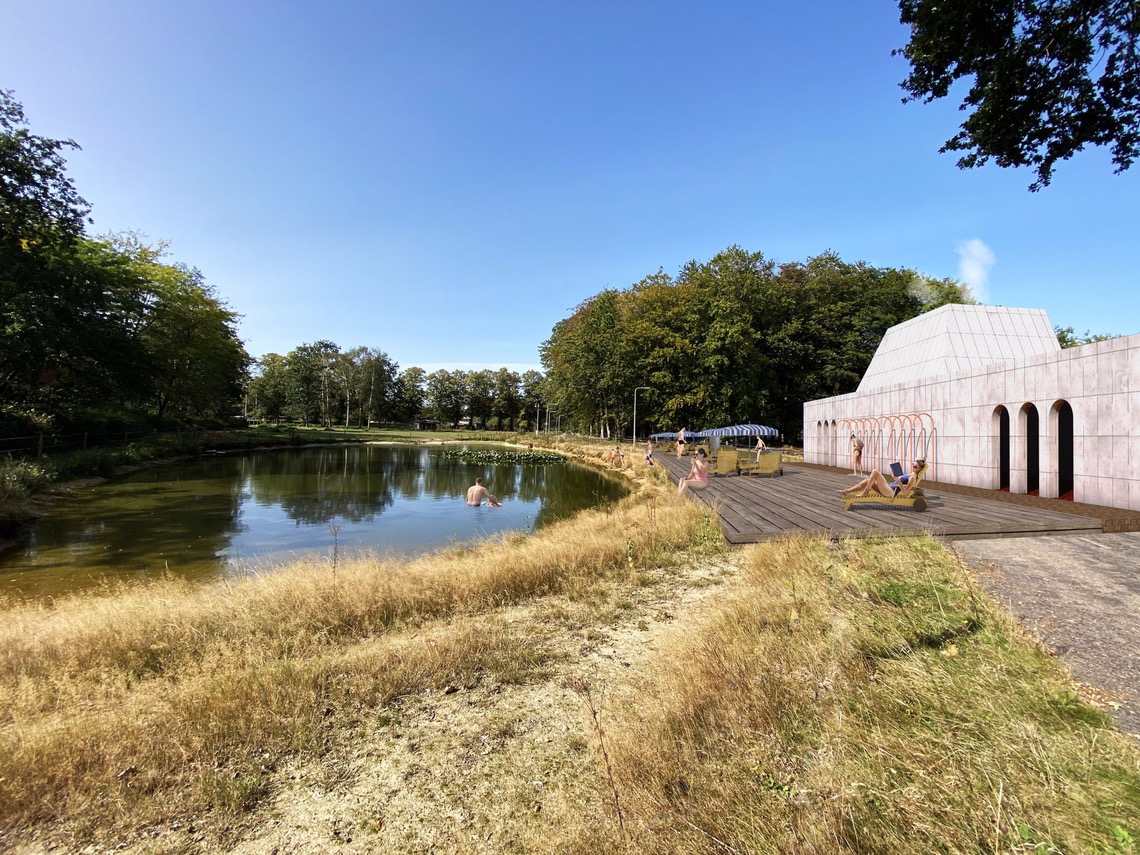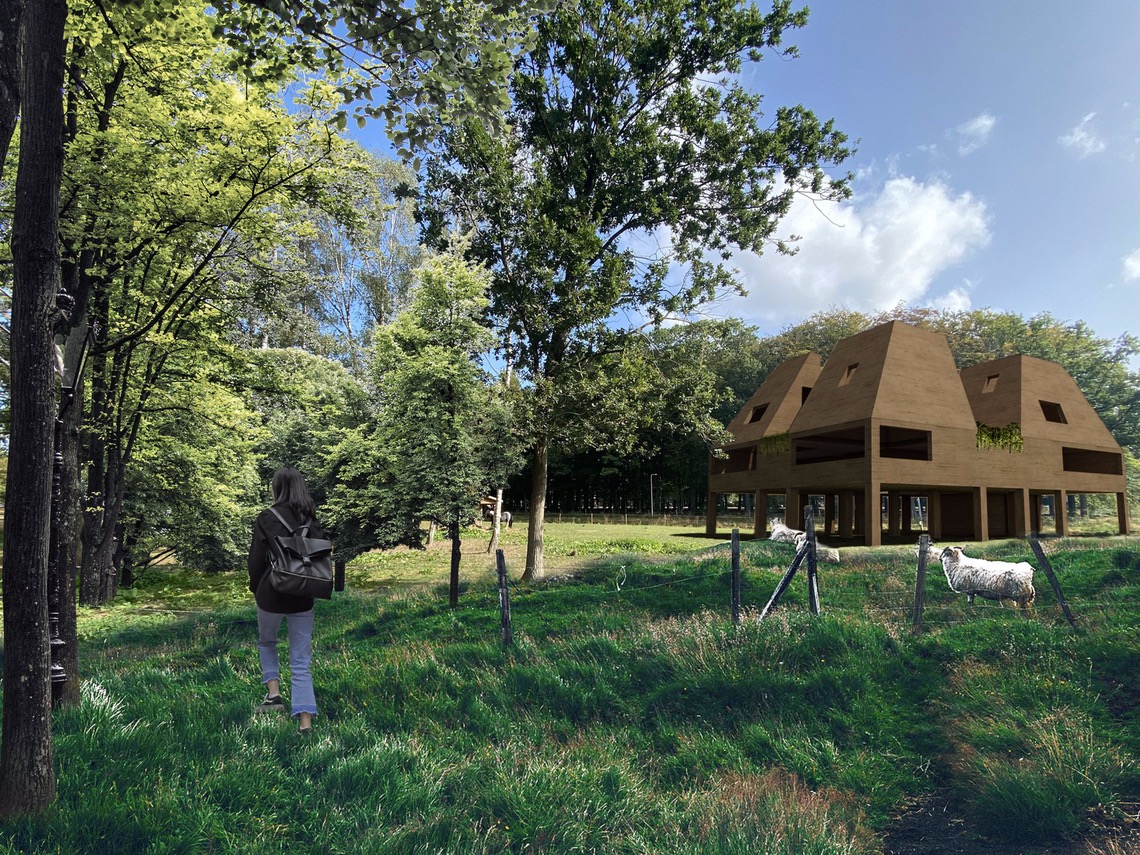What makes this project special?
“The Playbook for healing environments is a spatial strategy for the development of the estate of De Grote Beek in Eindhoven as a sustainable healing environment. This is one of the largest mental health landscapes in the Netherlands. Healing is the central theme of the site, and healing is a process, not a fixed state. Therefore, a healing environment should enable that. It focusses on what actions are taken today, next week and every year after that.
|
To address the sensitivity and vulnerability that comes along with mental healthcare, I combined working methods of architecture and social design. How can a transformation be brought about in a way that is not as brutal and disturbing as the traditional building site? How can the transformational process be cleaner and more open, instead of fenced-off, dusty and noisy?” |
 Photo: Kornelia Dimitrova/ Photographer: Hannah van Luttervelt
Photo: Kornelia Dimitrova/ Photographer: Hannah van Luttervelt
What was the objective of this project, and how does the design contribute to achieving this objective?
“My design research explored how De Grote Beek can be transformed in a sustainable healing environment that is both a welcoming park and the home of a resilient community.
If a master plan is a fixed point in the future, depicting how things could potentially look like, the Playbook is everything in between the present and that fictional future moment. It proposes a process of transformation and illustrates what actions can be taken in a few weeks, months, years, and decades. Connecting actions spanning from daily maintenance to the reopening of the stream, in one coherent social story and spatial logic.
In a few months an event program can be set up, which offers the impulse to test certain programmatic and spatial developments. For instance, a field can be equipped with lounge beds and parasols to offer space for sunbathing as self-care. If that activity is embraced, it would be worthwhile over the next years to give it a permanent spot. The Playbook tests these future possibilities visually and narrates how parts of the landscape can be developed by taking small steps.”

Photo: Playbook for healing environments / Photographer: Kornelia Dimitrova
Can you tell us something about the (design) process?
“At the start of the project in 2018, the site was completely new to me. To envision its future, I needed to understand how it works now, and what social and physical processes form the site. My way of doing this is through mapping. I walked through the park, spoke with the people working, living, and receiving care. I read documents, plans, Excel sheets, certification criteria, and historic biodiversity reports. Through this I gathered a variety of information, perspectives, and memories of the place, ranging from where people find purpose, to where the soil is too dry.
With this information I developed four future scenarios that explored different spatial logics of reaching the transformation goals. In a conversation with the director, we chose one of these scenarios, as it resonated most closely with their culture. The transformative logic we chose is at the core of the Playbook."
The spatial strategy presented in the Playbook is the result of a 2-year design research, which I did in the professional doctorate program of the TU Eindhoven. I got the chance to work on this, through the invitation of Juliette Bekkering, the professor who had set up the collaboration with GGzE. After the research, I redeveloped and published the Playbook, on commission of GGzE as they needed it to become a document for day-to-day use and reference, accessible to a broad audience of experts and non-experts.”

Visual: bird shelter tower / Design: Kornelia Dimitrova
Were there any windfalls, pitfalls or setbacks while working on this project?
“Having two years to work on this project enabled me to truly get to know the people. What struck me from the start was how open they were. Through listening carefully, and annotating maps in the process, they opened their worlds for me. I think this is what enabled me to develop something that is recognised and embraced by the community. The culture of care, self-care, care for others, and the landscape were another thing that impressed me.
One of the challenges was how to develop these scenarios in a way that enables a meaningful strategic dialogue between the field of design and the field of management. I spent half of the project time on this exploration, developing a series of scenarios and frameworks, until I found one which worked. Had I had less time, I probably would have had to rush through this part. But it is important to find a common language, especially when discussing strategic approaches. Otherwise, you end up designing with assumptions.”
“It is important to find a common language, especially when discussing strategic approaches. Otherwise, you end up designing with assumptions.”
– Kornelia Dimitrova
Has your design research culminated in the development of actual healing environments?
“The act of building a healing environment requires a long-term commitment. It is entirely in the hands of the team of GGzE, the contractors they work with and the concrete steps they take together. I wouldn’t dream of taking credit for any of that.
But I do know that their thinking and ideas crystallised while I was working on the research, simply through the questions I asked and the observations I made. The Breinpad for example is the embodiment of the healing process in a visitors’ path, it started out as a short path going from nowhere specific to nowhere specific. I proposed that we should make that the main pedestrian loop, connecting all fragments of the site. It is an idea they embraced and implemented. Similarly, the problem of car traffic was articulated in the master plan as a question of infrastructure. In reality it is a question of behaviour. In this case the Playbook was also a way to propose alternative ways of thinking and doing.”

Visual: sundeck and bathhouse / Design: Kornelia Dimitrova
Are you satisfied with your career steps to date? Do you have advice for other designers?
“A few years ago, I had a sense that I was working on a broad variety of topics, and the connection between them was hard to see. Freely exploring themes and methods is in itself a valuable process of learning. But the pitfalls are that you sometimes find yourself doubting what to say ‘yes’ to, and what to say ‘no’ to. Over the last couple of years, and especially by taking on the research on De Grote Beek, I was able to start distilling what type of work I want to take on, and through which roles or methods I can make the impact I aim for. It’s very intuitive, but I feel that I have found my frequency, or at least I feel that I’m very close to it.”

Visual: collective forms of living / Design: Kornelia Dimitrova
Where can we see your work?
“On April 22, a new exhibition will open at Het Nieuwe instituut - In Search of the Pluriverse - curated by Sophie Krier and Erik Wong. Among many other works, 42 collages that I made to visualise to possible futures of De Grote Beek will be shown there, accompanied by a short audio conversation. The Playbook itself will be available in NAi’s bookshop.
I’m currently working on a pilot project called Stadsoever, it will be a temporary public space intervention allowing people to sit closer by the river, in the centre of Eindhoven. It’s an experimental project, and the focus is on how we can use and re-think small green spaces in the city as spots for mental and physical wellbeing. This is part of a larger trajectory of the municipality to address issue of public health in the future. It will take place in May.”